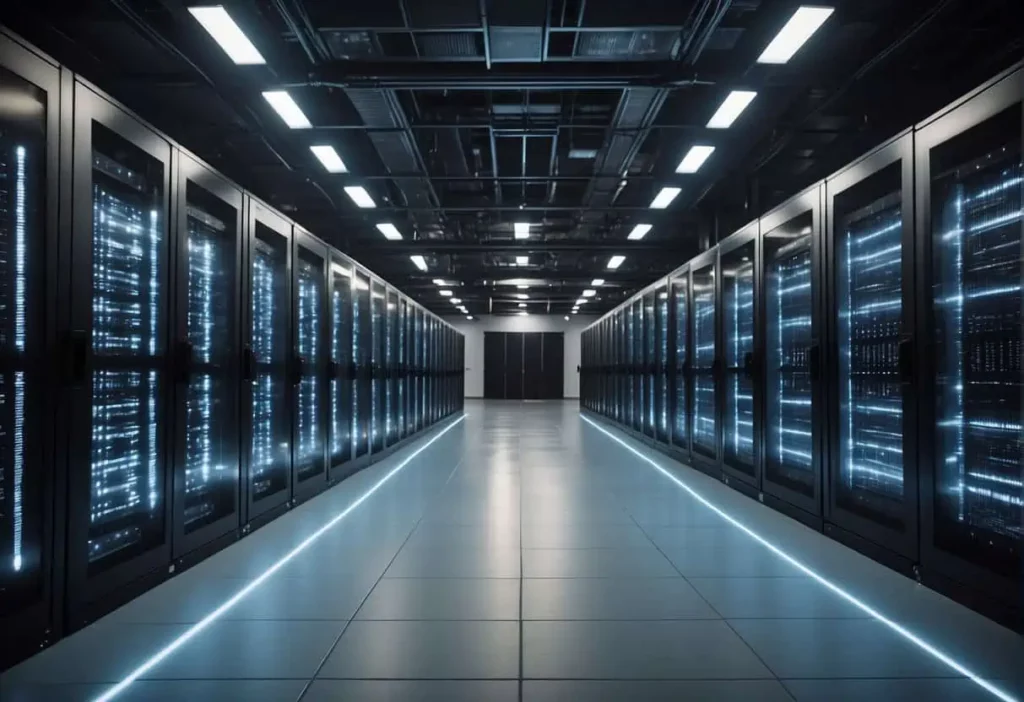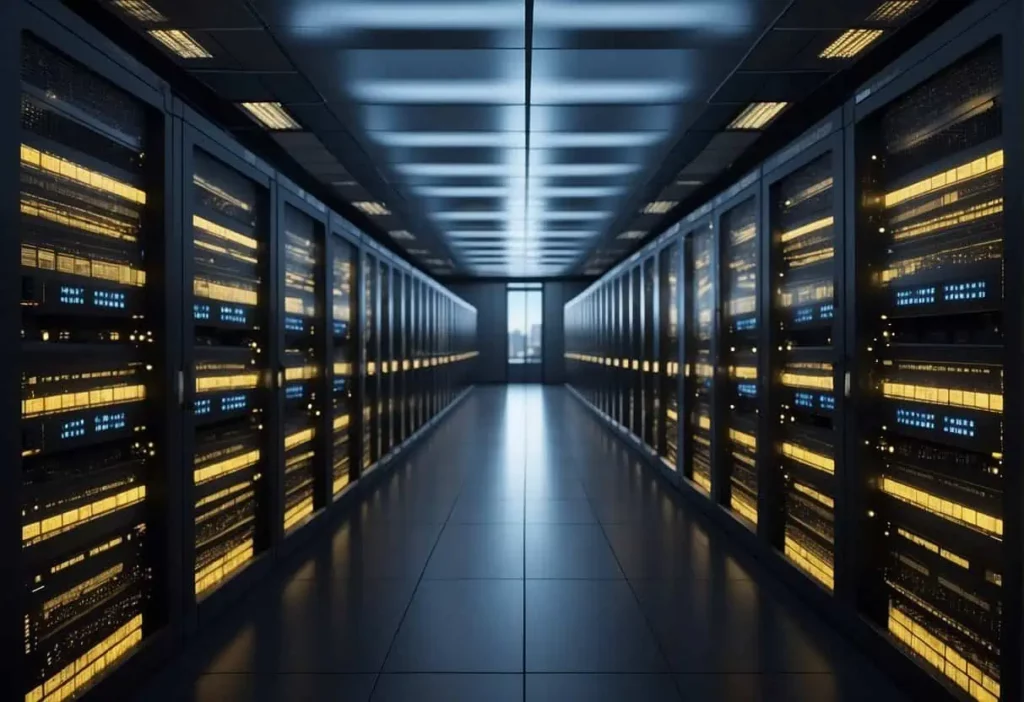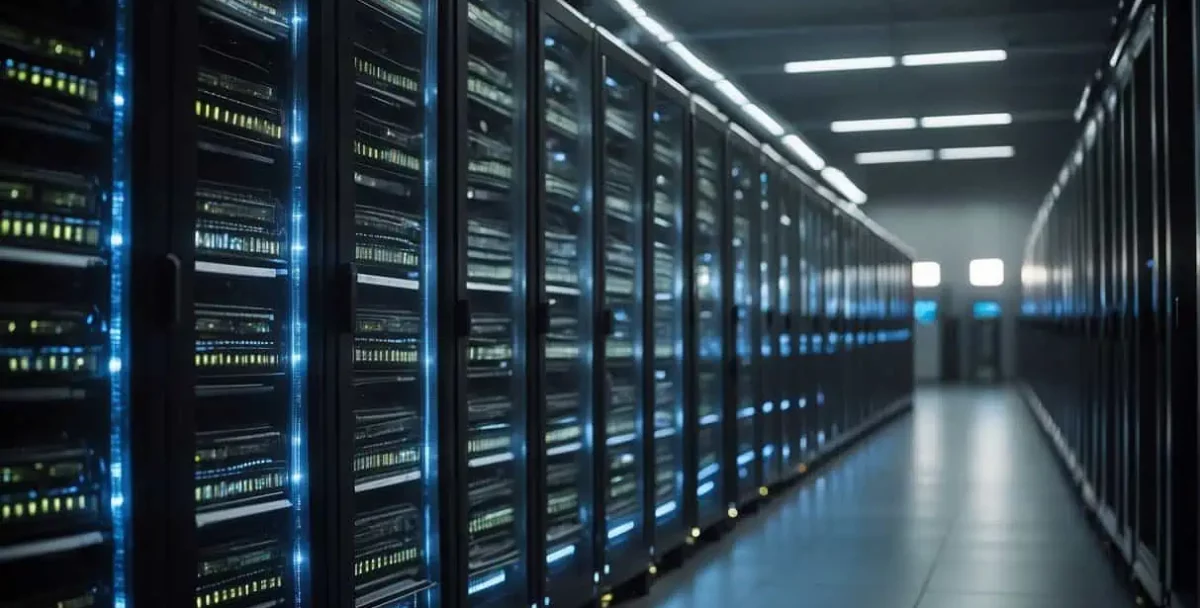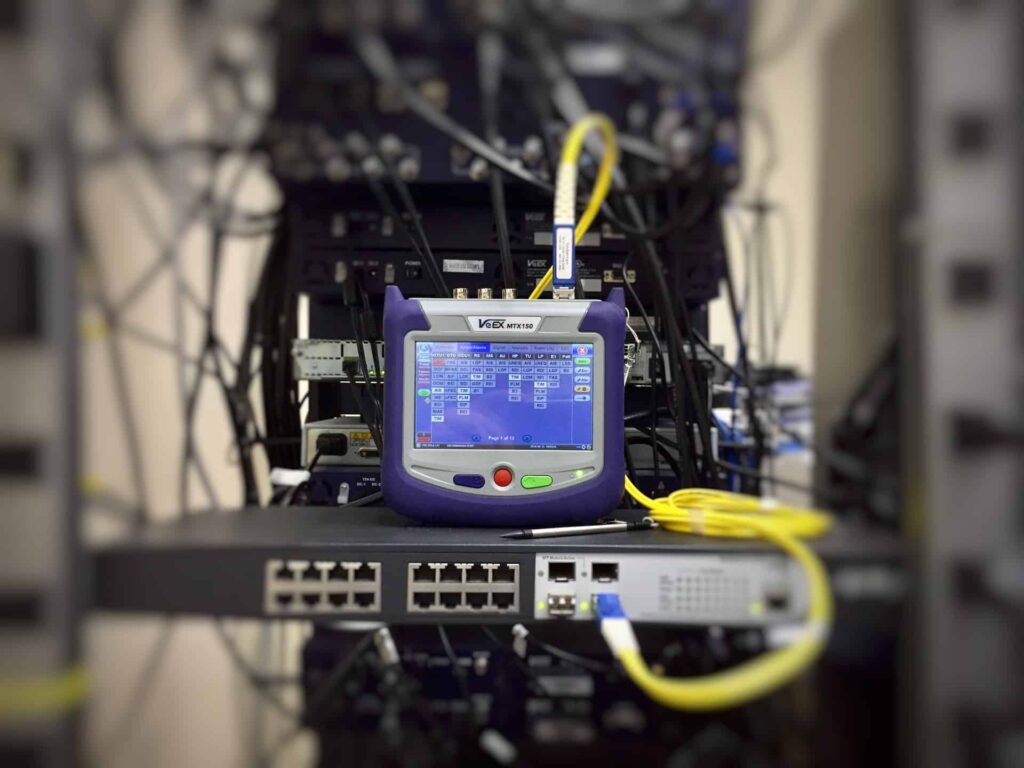Determining the correct size for a data center is a critical decision that hinges on a variety of factors, including the specific needs and resources of an organization. Different organizations will have different requirements based on their size, technological dependency, and future growth projections. Proper sizing affects not only the day-to-day operations but also the long-term viability of a data center. It involves a comprehensive assessment of the available technology and the budget allocated for facilities, as well as an understanding of power and cooling needs, which are central to the design of the physical space.
Beyond the basics of physical space, the design and planning phase of a data center consider the power distribution as a primary factor, especially when defining the width-to-length ratio of the building. The absence of columns is preferred, as they can disrupt the optimal use of space and air flow. Modular design and lean construction methods are becoming more prevalent, especially as data centers begin to gravitate towards edge computing in secondary markets. This approach supports scalability and ensures that the infrastructure can adapt to evolving IT demands without excessive initial costs.
Key Takeaways
- Size and design of a data center hinge on organizational size, technology, budget, and long-term goals.
- Power distribution and modular construction are critical in data center design to ensure efficient space use and flexibility.
- Data center capacity must be managed to uphold uptime and meet future IT demands in a cost-effective manner.
Understanding Data Centers

When one approaches data center design and services, they must understand that these facilities are fundamental to modern computing, housing a network’s critical systems and associated components.
Types of Data Centers
Data centers are categorized by their infrastructure and service offerings. Traditional data centers are typically on-premises facilities owned and operated by the entity they serve, ranging from small server rooms to large-scale enterprise data halls. Colocation data centers offer rental space and resources for individual server deployments. Cloud data centers, run by providers like AWS or Azure, offer scalable resources and services over the internet. Lastly, Edge data centers are smaller facilities located close to the end-users they serve, designed to deliver faster services and reduce latency.
Components of a Data Center
The key components of any data center revolve around the design and technology required to maintain the reliability and efficiency of the services provided. Key components include:
- Power Systems: Uninterruptible power supplies (UPS) and backup generators to ensure continuous operation.
- Cooling Systems: HVAC (heating, ventilation, and air conditioning) systems that manage the temperature to prevent overheating.
- Networking Infrastructure: Routers, switches, and cabling to manage data transfer and internet connectivity.
- Security Systems: Both physical and cybersecurity measures to protect data integrity and availability.
- Storage: Comprising SAN (Storage Area Networks) or NAS (Network-Attached Storage) for data storage needs.
- Computing Resources: Servers and virtualization platforms that process and manage the data center services.
The interplay between these components determines the overall efficiency and capability of the facility.
Planning and Design

In data center planning and design, meticulous attention to location, spatial layout, and efficiency is paramount. Each decision made has a direct impact on operational performance and scalability.
Location Planning
The selection of a data center location is influenced by a series of strategic factors. Key considerations include:
- Accessibility: Proximity to the organization’s core operations and ease of access for staff and maintenance crews.
- Risk Factors: Evaluation of natural disaster risks, political stability, and economic conditions.
- Infrastructure: Availability of essential utilities such as electricity, water, and high-capacity network connectivity.
Design Considerations
The design phase of a data center encompasses a wide range of elements to ensure optimal performance. Noteworthy components include:
- Layout: A ratio of width to length, often 3:4, can provide a balanced design for operational efficiency and future scalability.
- Flexibility: Designs should accommodate technological advancements and changing business requirements.
- Cooling Systems: Adequate space must be allocated for cooling apparatus to manage the heat generated by computing resources.
Space Optimization
Maximizing floor space while ensuring proper airflow and access for maintenance is a detailed process. Techniques include:
- Square Footage: Efficient utilization of square footage is critical to cost management and environmental control.
- High-Density Areas: Where possible, high-density compute space should be concentrated to streamline power and cooling resources.
- Modularity: Implementing modular designs can provide the agility to expand physical space or reconfigure layouts as needs evolve.
Sizing and Capacity

Proper sizing and capacity planning in data centers are crucial to meet IT demands and prevent system failures. This involves an analysis of IT load, power requirements, and space utilization.
Determining IT Load
IT load is the combined demand of all computing resources within a data center. It’s measured by assessing the computational power required by servers, storage, and networking equipment. This demand is dynamic and influenced by the organization’s current and predictive processing needs. One must meticulously account for the peak kilowatt load, which can dictate the upper thresholds of capacity and influence the planning strategy.
Calculating Power Needs
Understanding power needs is integral to data center operations. This includes direct power to the IT equipment and indirect power for cooling and redundancies. Power Usage Effectiveness (PUE), which is the ratio of total facility energy to IT equipment energy, guides this assessment. A low PUE indicates efficient utilization of power. For instance, a PUE of 1.5 means for every 1.5 watts in at the utility meter, 1 watt is delivered to IT. Data centers often measure their capacity in terms of power available to IT systems, typically noted in kilowatts (kW).
Space Requirements
Space availability within a data center is a function of its physical size and the density of servers and storage arrays it can support. A dense configuration can house more capacity within the same square feet. However, the risks of overheating and failure heighten without adequate cooling strategies for high-density environments. Smaller data centers might operate within 5,000 to 10,000 square feet, but larger enterprise and hyperscale data centers significantly exceed this range. Data center capacity can thus refer to the physical space that is available for IT infrastructure.
Cooling Systems
Effective data center design requires understanding the interplay between power consumption and cooling requirements. A balance must be struck to maintain optimal operating conditions while minimizing energy usage.
Air Cooling Solutions
Air cooling remains the most common method to mitigate heat in data centers. It involves drawing ambient air into the data center, absorbing heat from equipment, and then expelling the warmed air. Factors to consider include airflow management, heat output, and equipment density. Strategies such as hot aisle/cold aisle layouts are employed to maximize cooling efficiency. Utilizing variable speed fans helps in adjusting to the cooling demands based on the real-time thermal load.
Liquid Cooling Solutions
For environments with high-density racks that produce more heat than traditional air cooling can handle, liquid cooling presents an effective option. Liquid cooling systems utilize a coolant which absorbs heat more efficiently than air. It’s especially prevalent in high-performance computing. The design focuses around closed-loop systems and heat exchangers to ensure steady temperatures, often resulting in better space utilization and potential energy savings.
Cooling Efficiency
Efficiency in cooling systems is paramount to minimize operational costs and reduce environmental impact. Implementing modular cooling systems allows data centers to scale up their cooling in line with the power demands. Energy-efficient equipment such as variable speed compressors and economizers can significantly reduce energy consumption. Cooling plants should be designed to adapt to both present and anticipated loads, avoiding oversizing which can lead to inefficiency.
Data centers often use a Power Usage Effectiveness (PUE) metric to measure cooling efficiency. The lower the PUE, the more efficient the data center. A keen analysis of BTU (British Thermal Units) output of the equipment guides proper sizing of the cooling infrastructure to match the heat output—serving as a critical factor in overall data center energy management.
Infrastructure Management
Effective data center infrastructure management (DCIM) is critical for ensuring reliability and minimizing downtime. It encompasses a set of tools and practices designed to monitor operations, manage resources, and sustain uptime in data centers.
DCIM Tools
DCIM tools serve as the technological backbone for infrastructure management in data centers. They provide comprehensive visibility into all aspects of the data center operations, enabling informed decision-making and predictive maintenance.
- Key Functions:
- Resource Monitoring: Track power usage, cooling efficiency, and space allocation.
- Capacity Planning: Analyze data to forecast future needs and avoid overprovisioning.
- Change Management: Document infrastructure changes to maintain the integrity and reliability of operations.
Monitoring and Management
Monitoring and management are the proactive components of DCIM that ensure the data center’s performance aligns with the set standards for uptime and efficiency.
- Aspects to Monitor:
- Physical Infrastructure: Including power systems and cooling apparatus.
- Data Center Performance: Scrutinize workloads to optimize energy consumption and output.
- Environmental Factors: Such as temperature and humidity, to prevent hardware damage and failure.
By utilizing DCIM tools effectively, data center operators can achieve greater operational reliability and manage uptime and downtime efficiently, avoiding unexpected outages and ensuring smooth operations.
Energy Efficiency and Sustainability
In the realm of data center design, the focus on energy efficiency and sustainability is pivotal to both operational performance and environmental responsibility. The industry has adopted numerous measures and metrics to drive improvements in these areas.
Green Data Center Practices
Green data center practices aim to reduce the environmental impact of these facilities while maintaining or enhancing performance. Key practices include:
- Adoption of Renewable Energy: Implementing solar, wind, or hydro energy to power operations.
- Implementing Energy-Efficient Equipment: Upgrading to servers and cooling systems that consume less energy.
- Utilization of Hot Aisle/Cold Aisle configurations to optimize airflow and improve cooling efficiency.
PUE and Energy Metrics
Power Usage Effectiveness (PUE) is a metric used to determine data center energy efficiency. It is calculated as follows:
[ \text{PUE} = \frac{\text{Total Facility Energy}}{\text{IT Equipment Energy}} ]
A PUE value closer to 1 indicates higher efficiency. The industry had standardized this metric to measure and report on data center sustainability performance. Beyond PUE, data centers also monitor other energy metrics to provide a comprehensive view of efficiency and to identify areas for improvement. These metrics ensure a continuous push towards reduced energy consumption and sustainable operation practices.
Budgeting and Cost Considerations
Careful planning of the budget is critical for the successful creation and operation of a data center. It encompasses initial investments and ongoing expenses that collectively contribute to the total cost of ownership.
Estimating Capital Expenditure
Capital expenditure (CapEx) refers to the funds used by a company to acquire, upgrade, and maintain physical assets such as property, industrial buildings, or equipment. In the context of data center construction, CapEx generally includes the cost for acquiring land, building construction, purchasing equipment, and the installation of necessary infrastructure. The estimation process should start with a detailed inventory of these components:
- Land Acquisition: Site location costs, varying by geography.
- Building Construction: Costs associated with the physical data center structure.
- Infrastructure: Includes electrical and mechanical systems, such as power distribution units and cooling systems.
- Equipment: Costs for servers, storage, and network devices.
- Installation & Testing: Expenses related to setting up and validating equipment functionality.
Operational Cost Analysis
Operational costs (OpEx) are the ongoing expenses for running the data center. These include day-to-day expenses such as:
- Energy Consumption: Power costs, often the most significant recurring expense.
- Cooling Systems: Maintenance and power for running HVAC systems which are critical for data center operation.
- IT Staffing: Salaries and benefits for the team managing and maintaining the data center.
- Security: Both physical and cybersecurity measures.
- Maintenance and Upgrades: Routine servicing and updates of equipment.
Operational cost analysis should focus on efficiency measures as they impact the total cost of ownership. The goal is to optimize the balance between performance requirements and cost savings to ensure long-term financial sustainability.
Virtualization and Cloud Services
In the realm of data center sizing, two transformative technologies, server virtualization and cloud services, have reshaped the approach to managing resources and space. They allow for more efficient server consolidation, optimizing both the physical footprint and the energy consumption of data centers.
Server Virtualization
Server virtualization technology enables a single physical server to host multiple virtual machines (VMs), each operating with its own set of virtual hardware. This process effectively decouples the operating system and applications from the underlying hardware, allowing for:
- Improved server utilization: Consolidation of several underutilized servers onto fewer physical machines maximizes resource efficiency.
- Reduced data center space: Less physical hardware reduces the real estate needs of a facility while maintaining computational power.
Server virtualization has become a cornerstone of IT strategies for its ability to enhance flexibility and reduce OpEx costs associated with space and energy usage.
Cloud Computing Impacts
Cloud computing services have further revolutionized data center dynamics by offering scalable resources based on demand. Key impacts include:
- Operational resilience: Cloud services provide robust automation and management toolsets, enabling workflows that adapt to changing needs.
- Resource optimization: Adopting cloud infrastructure translates into potential downsizing or upsizing of resources, like CPU and memory, contingent on real-time utilization.
The transition to cloud-based services from traditional data center models aids organizations in achieving a more agile and cost-effective approach to resource management.
Scalability and Future-proofing
Scalability and future-proofing are integral to designing data centers that can efficiently adapt to technological advancements and increasing data demands. Both concepts ensure that data centers can expand their capacity without incurring significant downtime or excessive costs.
Modular Design and Prefabrication
Modular design in data centers employs pre-engineered and standardized components that can be easily added or reconfigured. Prefabrication involves assembling parts of the data center, such as server racks or cooling units, offsite and then transporting them to the final location. This practice not only reduces on-site construction time but also provides a predictable and repeatable means to scale infrastructure.
- Benefits of Modular Design and Prefabrication:
- Allows for rapid deployment and expansion
- Minimizes on-site construction and commissioning time
- Enables precise right-sizing to avoid over-provisioning of resources
Scalable Power and Cooling Solutions
Modern data centers employ scalable power and cooling solutions to meet variable IT load demands. Modular Uninterruptible Power Supply (UPS) systems and Rear Door Heat exchangers (RDHx) are examples of such technologies.
- Scalable Power Systems:
- Modular UPS systems provide expansion capabilities without the immediate commitment to maximum capacity.
- Cooling Solutions:
- RDHx systems use less energy and enable higher server density.
- Match cooling output to the heat load ensuring efficient operation.
Each approach aids in future-proofing data centers, allowing them to scale operations seamlessly and sustainably in response to changing demands.
Colocation and Data Center Outsourcing
Colocation and Data Center Outsourcing offer scalable solutions for businesses seeking advanced infrastructure and operational efficiencies. These services not only cater to the need for physical space but also provide expertise in data center operations management.
Choosing a Colocation Facility
When selecting a colocation facility, businesses must consider several critical factors to ensure the facility meets their specific needs.
- Location: Proximity to the business or users can affect latency and accessibility.
- Facility Building: There should be adequate space for current and future needs, robust security measures, and reliable power supplies.
- Financial Implications: Cost-effectiveness without compromising on quality of services is vital.
- Scalability: The ability to scale up as the business grows is essential.
Transitioning to Colocation
The transition to a colocation facility requires careful planning and execution to minimize downtime and ensure business continuity.
- Data Center Manager Involvement: Involving data center managers early in the transition can facilitate a smooth shift, addressing operational concerns effectively.
- Infrastructure Migration Plan: Developing a comprehensive migration plan that outlines how and when equipment will be moved is critical.
- Support and Services: Ensuring the colocation provider offers the necessary support services for setup, maintenance, and unforeseen incidents is crucial.
- Data Center Ops Continuity: Establishing operations at the colocation facility should be seamless, with a focus on maintaining or improving current operational standards.
Regulatory Compliance and Standards
In data center sizing, strict adherence to regulatory compliance and meticulously defined compliance standards ensure that facilities meet legal, security, and operational benchmarks.
Industry Regulations
AFCom sets a significant precedent in establishing best practices within the industry, guiding data center providers on how to approach building and running their facilities. They must navigate a wide array of regulations, which often include local and international laws relating to data protection, energy efficiency, and operational security. The industry regulations also dictate the physical and environmental standards that data centers must abide by to ensure the safety and reliability of the services they provide.
Compliance Standards
Data centers must comply with various standards to maintain their operation within legal and industrial frameworks. These standards include, but are not limited to, ISO certifications, which pertain to quality management and information security management, as well as SOC 1, SOC 2, and SOC 3 reports, demonstrating control over information privacy and security. Compliance with standards such as HIPAA for healthcare data, PCI DSS for payment card information, and GDPR for data protection and privacy in the European Union is essential for data centers that handle such sensitive information. Compliance ensures they operate effectively, reduce the risk of breaches, and maintain trust with their stakeholders.
Location-Specific Considerations
When choosing a location for a data center, certain regions have established themselves as key hubs due to their infrastructure, connectivity, and political stability. Two prominent examples are Silicon Valley in California and Ashburn in Virginia.
Silicon Valley Data Centers
Silicon Valley is synonymous with technology and innovation, making it a coveted spot for data center establishment.
- Connectivity: The region boasts some of the world’s most extensive fiber networks.
- Business Ecosystem: Data centers here benefit from proximity to leading tech companies.
Ashburn Data Centers
Ashburn, Virginia, sometimes referred to as “Data Center Alley,” offers its own distinct advantages for data center location.
- Policy Incentives: Virginia offers tax incentives that can be financially advantageous for data center operators.
- Network Density: Ashburn is a nexus with over 70% of the world’s internet traffic passing through, providing unparalleled connectivity.
Each location has location-specific considerations that can impact the efficiency, cost, and performance of data centers.
Technical Specifications
Technical specifications form the blueprint for a data center’s infrastructure, encompassing detailed requirements for rack systems and power distribution. Accurate specs ensure compatibility, efficiency, and scalability within the data center environment.
Rack Specifications
Rack Units (U): Data center racks are typically measured in rack units (U), with one U equivalent to 1.75 inches in height. Standard server racks come in sizes like 42U, 45U, and 48U.
Standard Width: The industry-standard for rack width is 19 inches, which ensures compatibility with most equipment.
Airflow Management: Implementing effective airflow solutions, such as hot/cold aisle containment and raised floor systems, is crucial for maintaining optimal operating temperatures.
Load Capacity: It is vital that racks and cabinets are rated to handle the weight of fully loaded equipment, often requiring reinforced designs for high-density setups.
Power Distribution and Cabling
Power Distribution Units (PDUs): Power requirements should be meticulously calculated based on peak kilowatt load to choose the right PDUs, ensuring consistent distribution of power across all racks.
Amps and Voltage: Data centers need to be equipped with suitable amperages and voltage levels for their infrastructure. Properly gauged cabling is necessary to handle the current and prevent overheating.
Cabling: Structured cabling with clear labeling and pathways reduces the risk of disorganization and allows for easier maintenance and scalability.
Columns and Layout: Strategically placed distribution columns can enhance the layout by centralizing power distribution while maintaining clear pathways for both data and power cables.
Vendor and Partner Selection
Selecting the right data center provider and forming effective partnerships is a pivotal decision for businesses looking to leverage third-party data center services. It entails a thorough evaluation of potential vendors, considering factors such as data processing capabilities and the terms of partnership agreements.
Evaluating Data Center Providers
A methodical approach should be taken when assessing data center vendors. Prospective clients often prioritize the location, as proximity can impact latency and the accessibility of physical infrastructure. Data processing capacity and efficiencies are likewise assessed to ensure they align with organizational needs. The IT infrastructure should be evaluated for its ability to support high-speed fiber connections, ensuring that data transfer remains swift and reliable.
Moreover, the reputation of providers, like Schneider Electric, which has marked a solid presence in the data center domain, can be indicative of reliable and quality services. Assessing their infrastructure involves:
- Scalability: Can the provider accommodate growth?
- (Example: Rack space available for expansion)
- Reliability: Uptime statistics and redundancy protocols need to be scrutinized.
- (Example: SLAs promising 99.999% uptime)
- Security: Both physical and cybersecurity measures must be robust.
- (Example: Biometric access controls)
- Compliance: Adherence to relevant industry standards and regulations is imperative.
- (Example: ISO 27001 certification)
- Support: The availability and responsiveness of the vendor’s support team are vital.
- (Example: 24/7 on-site technical support)
Partnership Agreements
Partnership agreements with data center providers are not to be entered into lightly; they are binding contracts that outline the expectations and obligations of both parties. Key aspects of these agreements include:
- Service Level Agreements (SLAs): These are critical documents that define the performance and reliability standards set by the provider.
- Cost structure: Understanding all underlying costs and any potential for unforeseen charges avoids disputes.
- Disaster recovery: Vendors should have considered scenarios for business continuity to maintain operations under adverse conditions.
- Flexibility: The potential for scaling services up or down should be provided for in the agreement.
- Exit strategy: Conditions for the termination of services need to be agreed upon, including data retrieval and transition assistance.
In these partnerships, the goal is to establish a reciprocal relationship that affirms the vendor’s ability to meet the data center requirements and the client’s need for assurance of service continuity and quality.
Frequently Asked Questions
Effective data center design is crucial for operational efficiency and scalability. This section addresses common inquiries regarding the dimensions and considerations of data centers.
What factors determine the sizing of a data center?
Data center size is influenced by current IT load, future growth projections, redundancy requirements, and the types of services hosted. Efficiency is a priority, and size does not necessarily equate to efficiency.
How do you calculate the power requirements for a data center?
Power requirements are calculated by assessing the IT equipment’s wattage demands, cooling system power use, and additional energy needed for supporting infrastructure. A buffer for redundancy and future growth is also factored in.
What are the standard classifications for data center sizes and what do they signify?
Standard data center classifications range from Tier I to Tier IV, signifying the complexity and redundancy of the infrastructure. Tier IV provides the highest levels of fault tolerance and continuous availability.
How does data center architecture impact its sizing and capacity?
The architecture, including network design, storage setup, and server distribution, directly impacts data center capacity. It must be scalable and flexible to accommodate growth without significant redesign.
In what ways are data center capacities quantified beyond megawatts?
Beyond power, data center capacity is measured in terms of available space, cooling capacity, network bandwidth, and the potential number of racks and servers that can be accommodated.
What are the key components to consider when planning the physical space of a data center?
When planning physical space, it is important to consider rack layouts, cooling infrastructure, cable management, security measures, and the need for additional spaces such as loading docks and operations centers.
Last Updated on February 12, 2024 by Josh Mahan


![Best data center racks Best data center racks [buyer’s guide]](https://cc-techgroup.com/wp-content/uploads/2021/08/best-data-center-racks-1024x576.jpg)

